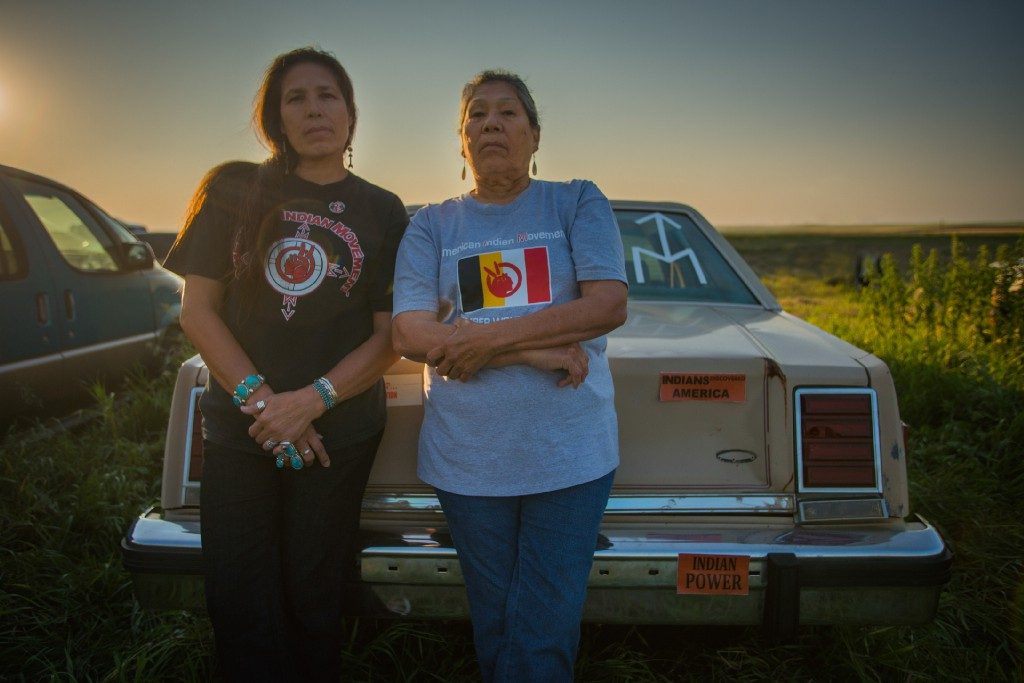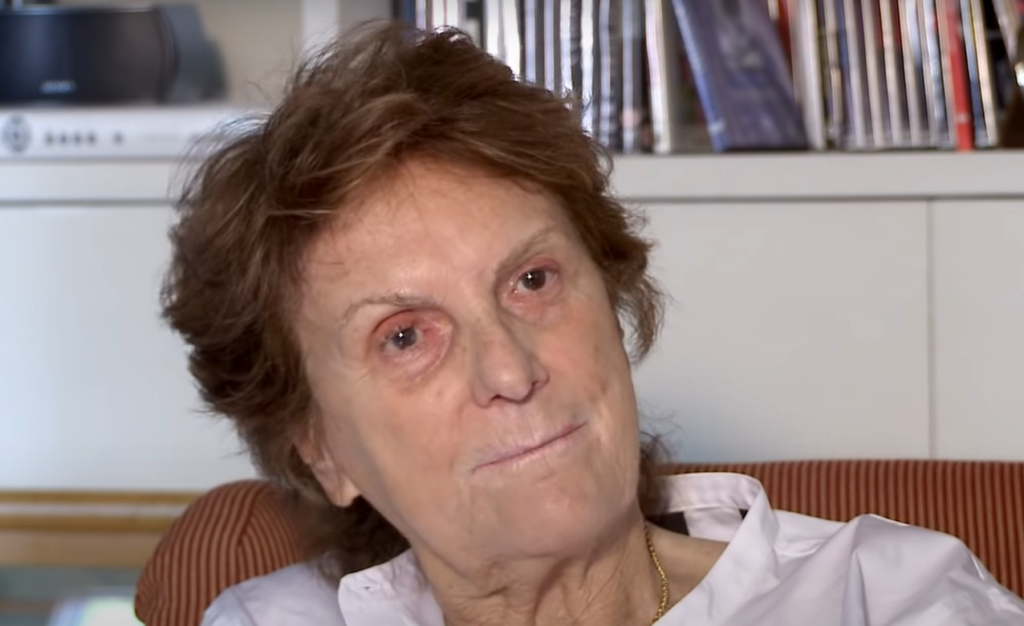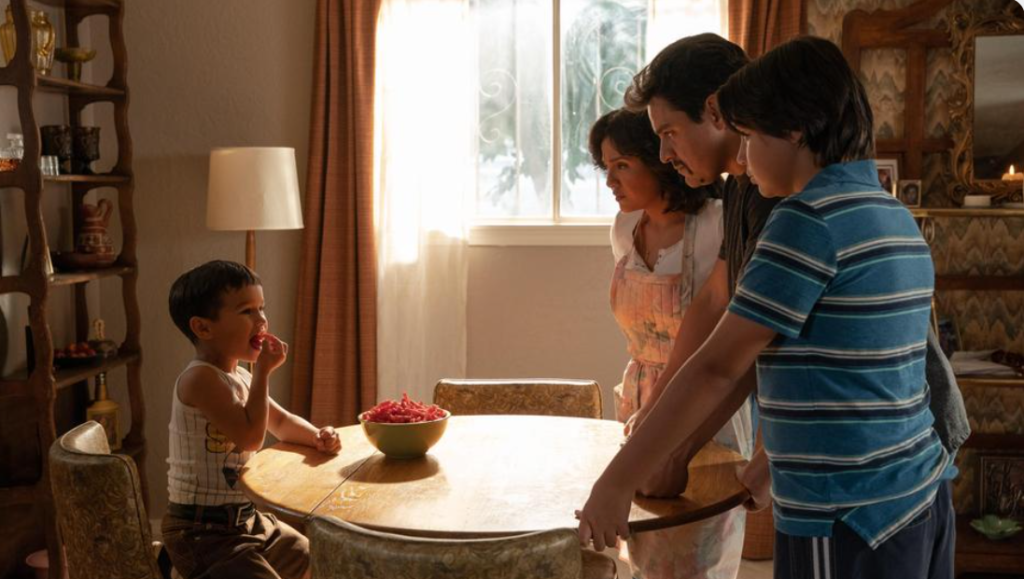Christina D. King is a member of the Seminole Tribe of Oklahoma whose work across commercials, documentary, film, and television focuses on human rights issues, civic engagement through storytelling, and democratizing filmmaker opportunities for minority voices. She has produced “We The Animals,” “This May Be The Last Time,” “Capitalism: A Love Story,” and more. “Warrior Women” is her directorial debut.
Elizabeth A. Castle is a scholar, activist, and media maker, and the author of the book “Women were the Backbone, Men were the Jawbone: Native Women’s Activism in the Red Power Movement,” the research for which inspired “Warrior Women,” which is Castle’s directorial debut.
“Warrior Women” will premiere at the 2018 Hot Docs Canadian International Documentary Film Festival on April 28.
W&H: Describe the film for us in your own words.
CK&EC: “Warrior Women” is the story of American Indian Movement (AIM) leader Madonna Thunder Hawk, who cultivated a rag-tag gang of activist children — including her daughter Marcy — into the We Will Remember Survival Group as a Native alternative to government-run boarding schools.
Their deep involvement with The Movement fight for Native rights made them more comrades than mother-daughter. Today, with Marcy now a mother herself, both women are still at the forefront of Native issues, fighting against the environmental devastation of the Dakota Access Pipeline, and for indigenous cultural values.
Through their story, the film explores what it means to balance a movement with motherhood, and how activist legacies are passed down from generation to generation in the face of a government that has continually met Native resistance with mass violence.
W&H: What drew you to this story?
CK&EC: The AIM fight for indigenous rights and cultural revitalization that began in the late 1960s, and sort of peaked in the social conscious during the 1970s with high-profile coverage of the group’s 71 day standoff with the FBI at Wounded Knee, was pretty well documented for the time. But the story-at-large about how that movement operated internally, and who the major players were was completely written by a male-dominated press.
To paraphrase Madonna Thunder Hawk: everyone ran around and tried to find who most looked like a “warrior.” The media was looking for a symbol that made sense to their idea of power at the time. They were basically looking for the Native counterpart to Ford, and then Nixon. In doing so they missed the reality of how The Movement was actually organized, and ran on a community level: with women, and entire families, being a big part of that.
This wasn’t so different from what has happened since invasion in 1492. The English came to the Americas, and once contact with indigenous peoples became inevitable, they would only engage in a context that was Eurocentric: Who is your (brown) king? Who is your chief? But it was then, and is now, inconceivable to indigenous women that they wouldn’t play a role in politics.
Uncovering that new side to what was ignored, and thus is not widely known about The Movement, was movie enough. When oral history clips of both Madonna Thunder Hawk, and her daughter, Marcy, talking about those movement days separately came up, a much richer space of how activist legacies are passed between generations in families opened up.
Marcy speaks with both honesty about sharing her mom with a movement, and reverence for the role her mom had in The Movement — the mother/daughter aspect, and by extension the role of families and communities in Red Power was just something that had to be explored at that point.
W&H: What do you want people to think about when they are leaving the theater?
CK&EC: We just want everyone to leave the theater infused with a sense of radical self empowerment, and the inevitability of their own strength. This goes for all audiences — both indigenous and ally audience, because we’re certainly in a time where many, many people feel helpless and depressed economically, socially, politically, and spiritually.
For indigenous audiences, specifically, we want people to think about the power that flows in our blood. We hope the feeling of unapologetic Indian-ness powers our Native relatives through whatever they need it for — personally or in their community. If you think about it, we’re all descendants of fighters — of the best of the best — or we wouldn’t even be here. As Natives, we’re the descendants of every man, woman, and child who refused to die when the U.S. government was seeking their eradication. That’s powerful blood.
We’d also like people to realize [that] the value of the celebrity revolutionary image is over-valued. That it’s communities of everyone — from the children to the grandmas, and everyone in between — that makes change. And you don’t need anyone’s permission to empower yourself. You don’t need non-profit status and you don’t need an organizing prospectus. You just have to care enough to do the work. And if our relatives could do it 40 years ago without all of the ways of communicating and organizing we have now, you can do it too.
W&H: What was the biggest challenge in making the film?
CK&EC: Definitely decolonizing our filmmaking voice! At first we were very invested in using vérité to tell the story, because that’s the film language we knew best. But for this particular story, we found it very limiting in conveying the nuances of an indigenous worldview in ways that do not make it easy for viewers to substitute preconceived notions or stereotypes for real connection and understanding. But broadcasters and audiences really do yearn in an almost fetishistic way for a particular lens in viewing Native American life, so we struggled for quite a while in the wrong framework before we gained the confidence to break form and just do what felt right stylistically for our voices.
We were so lucky to have the support and input of a lot of very accomplished filmmakers we love and trust but at the end of the day, we came to realize we were still the best people in the room to tell this story due to our unique perspective.
This film is a directing debut for both of us, so we wasted a lot of time thinking, “well, so-and-so makes great films, and has so many awards, so they must know best,” when in reality those award winning films came from such a different perspective than we have. A lot of advice was taking the film further from where it needed to be.
Working with Madonna Thunder Hawk as a subject was also quite a journey because she’s an enthusiastic collaborator but a reluctant participant. At least in this very front-facing way that was never her thing. She calls it “chasing the mic.” She’d rather be making things happen behind the scenes politically than getting media attention. But that’s what we loved about her! She wasn’t inclined to take credit for anything — in fact by doing so she would be undermining her status in grassroots organizing — but she was, and still is, a very active force in fighting for indigenous rights on many, many levels.
Madonna is a very complex woman, who is hard to get at emotionally — not necessarily the easiest person to carry a film. But we have far too many films where filmmakers go find an emotionally compromised Indian, and make a real banger of a dramatic film that plays well to outsiders — but those aren’t films about Indians. They’re films about the effects of settler colonialism, so it was important to us to keep working at ways to convey this force that is Madonna Thunder Hawk.
W&H: How did you get your film funded? Share some insights into how you got the film made.
CK&EC: This film is a directing debut for both of us, but fortunately half of our team is a producer with experience raising funds for films, so while we got a lot of rejections, we eventually ended up with a dream team of partners. Vision Maker Media came in very early with significant funds, which was a vote of confidence that really made our eventual co-production with ITVS even possible.
We were pretty set until we decided to actually re-make the film when it was at a fine cut stage. It was an incredibly hard decision since we were both so burned out already but we’re both incredibly glad we took a step back.
To move forward with re-imagining and re-cutting a lot of the film, we had amazing grant partners in the Sundance Doc Fund, Firelight Films Next-Step Fund, Chicken and Egg Pictures, and the Sundance Native Lab. We will be forever humbled and grateful that those organizations saw what we were trying to do, and stepped up to give us the financial runway to take another swing.
At first we were incredibly embarrassed to be going to people asking for more money, but through some amazing mentors, we learned how to be unapologetic about our needs. We took a big break between the first cut of the film, and going out and asking for re-do money.
During that break, we worked hard on our new vision but we worked just as hard on ourselves to kind of learn what a lot of male filmmakers seem to know intuitively: we learned to take up space. We learned to re-cast “failures” as an inevitable part of the process.
W&H: What does it mean for you to have your film play at Hot Docs?
CK&EC: Though anywhere we premiere is Native land, it is particularly special because of the rich presence of indigenous peoples in Toronto. That’s so exciting to us because there are so many conversations we can have there that we can’t have at someplace like Berlin or Cannes.
There’s also a bit of a gap between Indigenous-minded films being made right now and what festivals want to program. Festivals tend to program films that stick to more popular formulas for docs, but they’re not necessarily the best modes of conveying a Fourth World point of view. So, we’re excited that we made something that feels true to our voice, and that a mainstream festival like Hot Docs has responded to it. It’s so encouraging.
W&H: What’s the best and worst advice you’ve received?
CK&EC: The best: “Do what hurts less.” Which isn’t to say making a documentary doesn’t require an insane amount of work, but we personally got so entrenched in working at a deficit that we forgot how to not be in tapped-out crisis mode. When someone said that to us six years into making our film, it was like we had been given permission to start backing off the martyrdom treadmill.
The worst: Graduating with a degree in Film Studies, there was definitely encouragement from school advisors that when going out into the workforce, we should hide qualities that would be considered more feminine. [We were told] to be serious, wear muted colors, don’t wear skirts, don’t be emotional — it’s not appropriate to gush or say you “love” a movie.
This kind of policing was actually probably very good advice for the realities of the workplace at the time but it’s going in the “worst” column because we know it’s B.S. now. Feminine energy should not be considered a handicap.
W&H: What advice do you have for other female directors?
CK&EC: Challenge yourself to think bigger and higher, and ask for it. So often we start to edit and self limit ourselves to adjust for the patriarchal narrative before there’s even pushback. Sometimes we perpetuate limitations because we expect them. I’m not saying you’ll get that bigger budget or you’ll get that Russian arm on a car shot — but try to see how things go if you approach your work with the expectation of getting a “yes.” If the answer is “no,” at least we’re building a community of women creatives who are pushing for more, and that can add up to a sea change.
Don’t be afraid to lift as you climb, and actively and aggressively support the work of other women and people of color by hiring them for your crew. Smash the — heteronormative, white supremacist, colonial — patriarchy; don’t reinforce it by supporting toxic masculinity in values or behavior just because it has been what has been rewarded.
W&H: Name your favorite woman-directed film and why.
CK&EC: Alma Har’el is just the end all. “Bombay Beach” is so incredible on every level. It is such a perfect balance of real and surreal that the greatest truths come out of the more performative stuff. And you never feel like these kids from this really economically and spiritually depressed place are being manipulated in any way because the direction comes from such a place of love and human bonding. How rare is it you get to actually see the subjects appearing to gather strength from the process of making the film? Incredible.
And of course she shot it on a 2-chip camera from Best Buy or something like that, and it’s still one of the most striking docs ever. It’s gorgeous. Come to think of it, her filmmaking is very indigenous in many ways — atemporal, valuing character over biography, and not afraid to break or experiment with form to catch the spirit of the space her subjects occupy.
W&H: Hollywood and the global film industry are in the midst of undergoing a major transformation. Many women — and some men — in the industry are speaking publicly about their experiences being assaulted and harassed. What are your thoughts on the #TimesUp movement and the push for equality in the film business?
CK&EC: It can be really exhausting to navigate the daily trauma of harassment, and find a way to move forward with the larger goals of creating art and important media that will change the world. However, we have to hold simultaneously the fact that violence against women — from harassment at work to actual murder — is all part of the struggle. So when we have the chance to draw connections from #TimesUp to #MMIW we must do that. There is an epidemic of Missing and Murdered Indigenous Women (#MMIW) across North America that has to be recognized as interconnected when we spotlight violations of women.
So, #MMIW is the hashtag we are concerned with. It’s not that we aren’t concerned with #TimesUp — it’s that we can’t achieve liberation and equity if it doesn’t also address all women who need justice.







